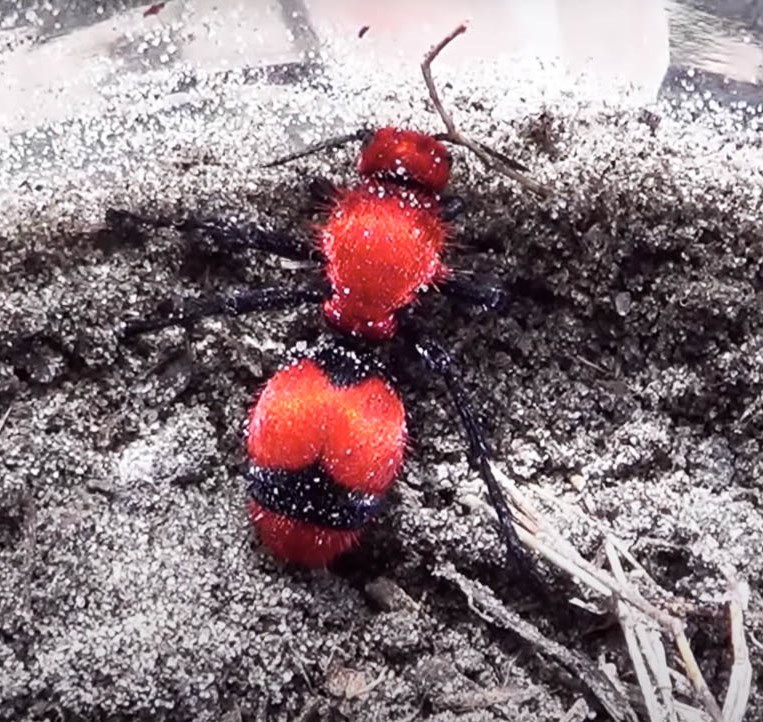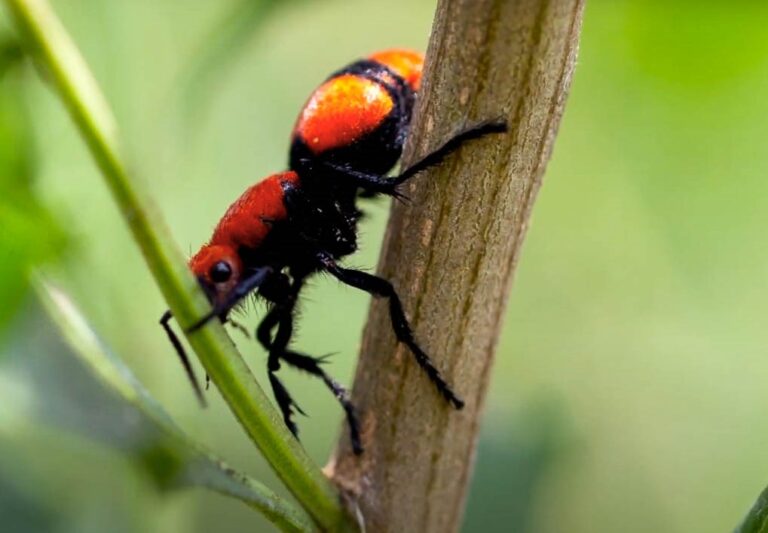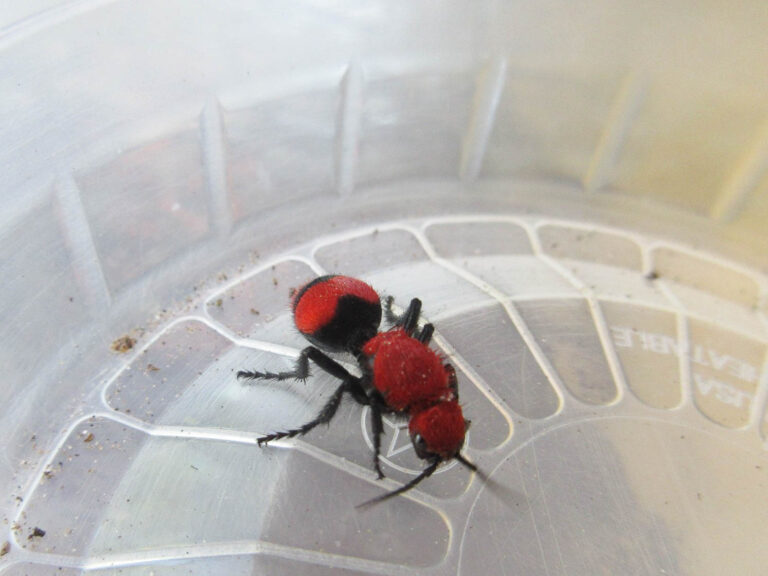About Velvet Ants
About Velvet Ants
Appearance
Velvet ants are known by many names such as red wasps, cow ants, or cow killer ants. Their common name comes from the velvety fur covering their bodies. However, despite their name, they aren’t even ants: they’re wasps. Although, this seems obvious enough from their appearance.
Males are more typically wasp-like, with a body of dense hairs and a set of wings on their back. They look so different from the females; it can be challenging to determine which species the males and females belong to. The females lack wings entirely, spending their lives on the ground. They do, however, have long curved stingers that protrude from their abdomen. Males don’t have stingers but do have a pseudo-stinger.
Aside from the vividly colored hair: usually red, but also yellow and orange, velvet ants’ bodies are a hard exoskeleton. They have a large thorax, a small waist, and a large abdomen. They have six legs that attach at the thorax and two long antennae. Typically, there are 0.25 to 0.8 inches long.
Behavior
Unlike other wasps, velvet ants are solitary creatures. They spend their lives hunting for food, usually nectar and water from flowers. However, they will also eat larvae and adult insects: flies and beetles. The females will scurry around in the ground looking for host species. Meanwhile, the males will fly from flower to flower.

They are most active from dusk into the night. The males are not typically dangerous. However, the females didn’t earn the name “cow killer” for no reason. While they aren’t particularly aggressive, they will sting if aggravated. Their sting was said to be powerful enough to kill a cow. Though this is probably an over-exaggeration, it is still best to be avoided.
To reproduce, velvet ants implant their eggs into a fly or beetle nest. The young ants then eat their way out of their hosts. This parasitic behavior is universal amongst velvet ant species.
Habitat
There are velvet ant species throughout the world. However, they are particularly common in the dry regions of North America, for instance, Texas and Florida. They prefer open areas such as fields, meadows, and lawns. This makes some species prevalent in the upper eastern regions of the US. However, the climate isn’t the deciding factor on where velvet ants will be found. Instead, because they are parasitic, velvet ants will thrive anywhere host species such as bumblebees or beetles are found.
Unlike other species, they will also not make nests. They will instead spend their lives on the move in open habitats.
Damage they cause
As they are solitary creatures, most species of velvet ants will not cause any significant damage to properties. Nor are they of particular threat to humans or domesticated animals. Therefore, you’re likely to be unaware if there are any velvet ants in your vicinity. However, as mentioned, some species do pack a sting of significant power. Therefore, in this case, you may want to take decisive action.
It is important to note that although velvet ants pack a punch, their venom is non-toxic. It will cause pain but is unlikely to lead to any severe long-term damage, such as from anaphylaxis. However, if you do experience the symptoms of anaphylaxis, seek immediate medical help. The pain has been compared to an electric shock, being rated as number 3 on the sting pain index. Considering the scale only goes up to 4, and bees are a 1, then it can be regarded as extremely painful. The pain will last around 30 minutes.

Infestation signs
It can be difficult to know if velvet ants are living in your vicinity. They will lay eggs into the nests of ground-dwelling insects nearby and may be seen leaving these nests. They also make a loud squeaking noise by rubbing abdominal segments together when trapped or as a warning sign.
You may also see a velvet ant walking through your home or garden. If you do, approach with caution. You don’t want to get stung. Or you may see a male moving between flowers or searching for a mate.
Either way, be sensible and take the necessary precautions.



